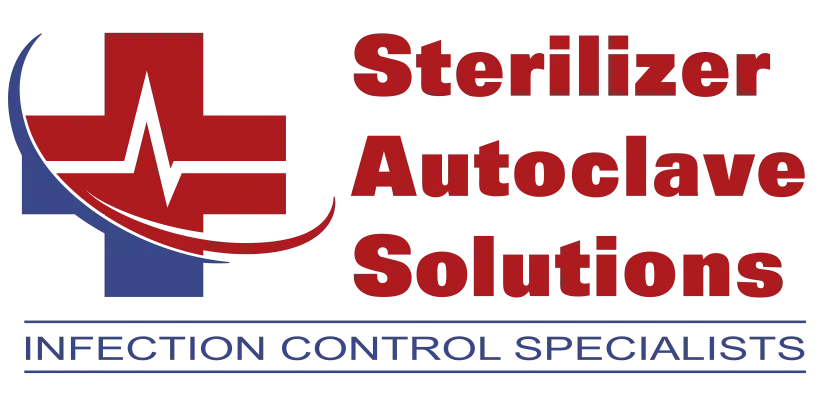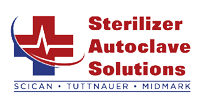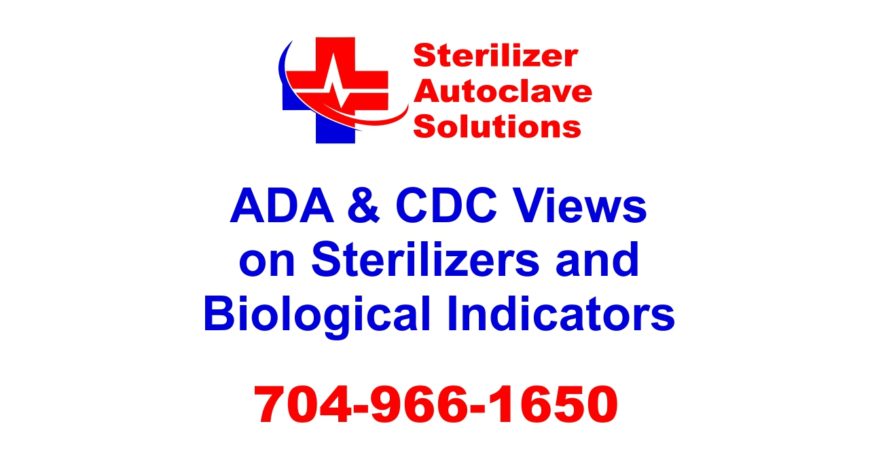ADA & CDC Views on Sterilizers and Biological Indicators Leave a comment
In this article, we’re going to go over the ADA and CDC’s views on sterilizers and bio-indicators. And if you just want to talk to someone, call our Free Tech Support at 704-966-1650 Option 3.
Regular assessment of a sterilizer’s operation and efficiency are just as important to the ADA & CDC as the function they perform. Failure to properly sterilize instruments and materials can cause a multitude of problems and they can be caused by many different factors.
Overloading, mechanical failures, and even procedural errors can result in improperly sterilized loads. Because of these issues, the ADA & CDC along with state and local boards publish regulations and recommendations to be followed for successful sterilization.
Best practice procedures for sterilizer monitoring is achieved by using a combination of mechanical, chemical, and biological indicators.
The following recommendations are provided by the CDC.[1]
Let’s Start With Mechanical Indicators
These are simply the built-in gauges and displays of your sterilizer that records the cycle time, temperature, and pressure for every load.
Next is Chemical Indicators
Not being exposed to the proper sterilization environment will cause chemical indicators such as indicator tape to change color. Chemical Indicators should be used with every single load that is placed in the sterilizer.
Irregular pressure or temperature are examples of an improper sterilization environment. When these errors happen the chemical indicator will not change color and lets you know that the load needs to be re-sterilized.
Another note is that indicator tapes are sterilizer specific. This means tapes for steam sterilizers can’t be used to test dry heat, gas, chemical vapor, or other types of sterilizers and vice-versa.
Using chemical indicators only and not including biological indicators is not a good practice. Measuring the microbial killing power of a sterilizer can only be done with biological indicators consisting of bacterial endospores.
And Finally Biological Indicators
The CDC recommends that AT LEAST Once a Week sterilizers should be monitored with biological indicators.[2]
Check with your state dental board for any different requirements they may have.
There are two ways to employ biological monitoring
The first is with an in-office incubator and spore monitoring strips. This method usually gives results in 24-48 hours.
Secondly, there are many mail-in spore monitoring programs. This process usually takes a week to ten days and can be cause for a multitude of issues.
If the positive spore test returns a fail the CDC makes these recommendations.[3]
1 – Remove the sterilizer from service
2 – Rule out operator error by ensuring the office sterilization procedures are being implemented properly.
3 – After correcting any identified procedural problems retest the sterilizer using mechanical, chemical, and biological indicators.
If the test comes back negative
If the repeat biological indicator tests negative and other indicators display within normal limits you can return the sterilizer to service.
Be certain to maintain a spore test results log. Your state dental board can tell you how long the spore testing records need to be kept.
If the test comes back confirming sterilization failure
If the second biological indicator is positive or if either the mechanical or chemical indicator tests indicate failure it is pretty simple. The sterilizer should be taken out of service until the cause of failure has been determined and repaired.
If the failure comes from procedural errors you should correct those first. If they are corrected and the failures continue, do not use the sterilizer until the reason for failure is determined and corrected.
The sterilizer should run three consecutive empty-chamber cycles with negative results to be certain the error has been corrected. The sterilizer can be returned to service after three good tests.
Be sure to check your log and reprocess as many failed loads as possible. Instruments included in cycles since the previous negative spore test are subject to bad sterilization. And this can cause many unwanted issues.
Document not only the failed test results in your log, but also include all actions taken to return the sterilizer to its proper operation.
Biological Indicators for Testing Available Here
Chemical Indicators for Testing Available Here
BioNova Incubator Available Here
[1] Centers for Disease Control and Prevention Guidelines for Infection Control in Dental Health-Care Settings — 2003 (December 19, 2003 / Vol. 52 / No. RR-17). U.S. Department of Health and Human Services 2003. Accessed September 21, 2018.
Centers for Disease Control and Prevention. Summary of Infection Prevention Practices in Dental Settings: Basic Expectations for Safe Care. In: Services DoHaH, editor. Atlanta, GA: Centers for Disease Control and Prevention; 2016.
Kohn WG, Harte JA, Malvitz DM, et al. Guidelines for infection control in dental health care settings–2003. J Am Dent Assoc 2004;135(1):33-47.
[2] Centers for Disease Control and Prevention Guidelines for Infection Control in Dental Health-Care Settings — 2003 (December 19, 2003 / Vol. 52 / No. RR-17). U.S. Department of Health and Human Services 2003. Accessed September 21, 2018.
Centers for Disease Control and Prevention. Summary of Infection Prevention Practices in Dental Settings: Basic Expectations for Safe Care. In: Services DoHaH, editor. Atlanta, GA: Centers for Disease Control and Prevention; 2016.
[3] Centers for Disease Control and Prevention. Recommended infection-control practices for dentistry, 1993. MMWR Recomm Rep 1993;42(RR-8):1-12.
Centers for Disease Control and Prevention. Summary of Infection Prevention Practices in Dental Settings: Basic Expectations for Safe Care. In: Services DoHaH, editor. Atlanta, GA: Centers for Disease Control and Prevention; 2016.
As always if you have any questions about this process or anything else please feel free to contact us and take advantage of our “FREE TECH SUPPORT.”
We also offer FREE VIRTUAL TECH SUPPORT to “See and Talk” with a “Real Time Live Technician” for any problems you may be in need of help with.
You can also use our “FREE MAINTENANCE PROGRAM”. Take the guesswork and worrying about what unit is due for maintenance and which maintenance cycle it is time for. We will keep track of all your autoclaves and let you know when it’s time for anything.


